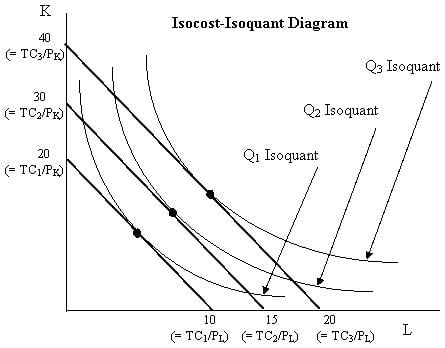 | ||
In economics, an expansion path (also called a scale line) is a curve in a graph with quantities of two inputs, typically capital and labor, plotted on the axes. The path connects optimal input combinations as the scale of production expands. A producer seeking to produce the most units of a product in the cheapest possible way attempts to increase production along the expansion path.
Economists Alfred Stonier and Douglas Hague defined expansion path as "that line which reflects the least cost method of producing different levels of output, when factor prices remain constant." The points on an expansion path occur where the firm's isocost curves, each showing fixed total input cost, and its isoquants, each showing a particular level of output, are tangent; each tangency point determines the firm's conditional factor demands. As a producer's allowable total cost increases, the firm moves from one of these tangency points to the next; the line joining the tangency points is called the expansion path.
If an expansion path forms a straight line from the origin, the production technology is considered homothetic (or homoethetic). In this case, the ratio of input usages is always the same regardless of the level of output, and the inputs can be expanded proportionately so as to maintain this optimal ratio as the allowable total cost expands. A Cobb–Douglas production function is an example of a production function that has an expansion path which is a straight line through the origin.
